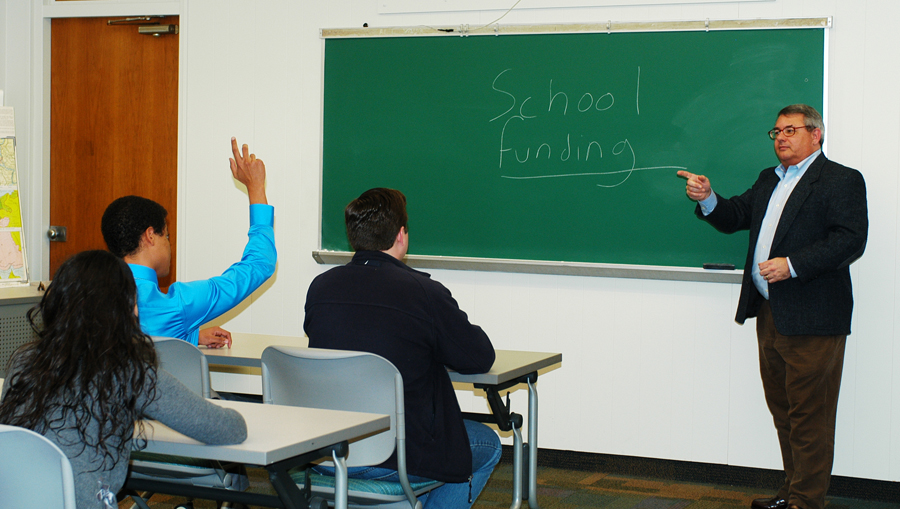First, let me address the real short-comings of distance learning in K-12. As everyone was quickly forced into distance learning this spring due to COVID and schools began looking for answers, there really was only one choice. Moving learning to online on short notice high lights many of its faults. If a district is not 1-to-1 (meaning every student is given a laptop or tablet for schooling) then that leaves out any student who does not have access to a computer at home. Even still, many students, especially high-risk ones, don't have the internet at home making them unable to attend to their school work. These issues are logistical in nature and could be dealt with by proper school founding but we all know that uphill battle.
The real issue at hand with utilizing distance learning in K-12 is the lack of proper training. The typical teacher is trained in educational theory grounded in facility-based education, not in online teaching. While some principles absolutely transfer to any realm of teaching, research points to best practices for online teaching that you simply don't think about when doing in-person learning.
The real issue at hand with utilizing distance learning in K-12 is the lack of proper training. The typical teacher is trained in educational theory grounded in facility-based education, not in online teaching. While some principles absolutely transfer to any realm of teaching, research points to best practices for online teaching that you simply don't think about when doing in-person learning.
Now on to the bright side of things. There are many positives to our current situation which causes us to reimagine what education looks like during times were in-person. Distance learning has already been used in certain areas of K-12 for years such as homeschooling, really small populations where teachers are often shared between schools, youth who are unable to attend traditional school for whatever reason, and many more. Some schools have gone entirely online saving money on facility costs that they spend on resources and keeping teacher to student ratio low. There are even emerging studies showing that, if done right using research-based best practices, distance learning can be as effective if not more than traditional facility-based instruction.
In my opinion, there is a happy middle-ground of facility-based instruction and distance learning instruction. There are certain things you just can't do online such as working on group projects that require in-person collaboration. Having a dedicated physical location where students could work collaboratively during problem-based learning with the teacher facilitating just makes sense. But a large portion of learning and instruction could be carried out online thanks to all of the modern tools at our disposal, both paid and free. As classroom sizes continue to grow making the teacher to student ratio continue moving the wrong direction, moving some learning to online might help alleviate this modern teaching challenge. Only time will tell what our "new normal" in education maybe, but using this time to better learn and understand how to use modern teaching tools to solve modern teaching problems might be worth the struggle.
References:


I completely agree that a middle ground is the key to distance learning. The pro's of distance learning somewhat warrant the loss of in-person learning. However, I believe distance learning is strictly only effective in the higher grade levels. It takes a certain level of maturity to effectively learn without a teacher staring over your shoulder.
ReplyDeleteI want to megaphone your comment on teacher training. Across the board, the educational experiences that I've had that impact my day-to-day teaching strategies the most haven't been from traditional learning (i.e. reading it in a book or taking a class about it). They, instead, come from watching my colleagues and my mentors use them in their own teaching spaces. In this way, I think of teacher education as process of apprenticeship more than of academic study.
ReplyDeleteTo return to your point about teachers being "trained in educational theory grounded in facility-based education, not in online teaching," I would say that the problem likely extends beyond that particular problem. I think it extends to the professorate that trains us (online) without themselves undergoing training in online-first education.
I would respectfully disagree about the ability to find a happy medium in K-12 education between distance and in-person. I'm a big believer the K-12 should be in-person only because of the importance that socialization and peer-interaction plays at those stages of life, particularly in the earlier phase of that grouping. As you pointed out yourself too, distance learning actively privileges students who have access to internet and computers. I would, however, agree that online education should still be included as part of teacher training/education and I agree with Zach that perhaps online education should only be available to the uppermost grades in K-12 as one option.
ReplyDelete